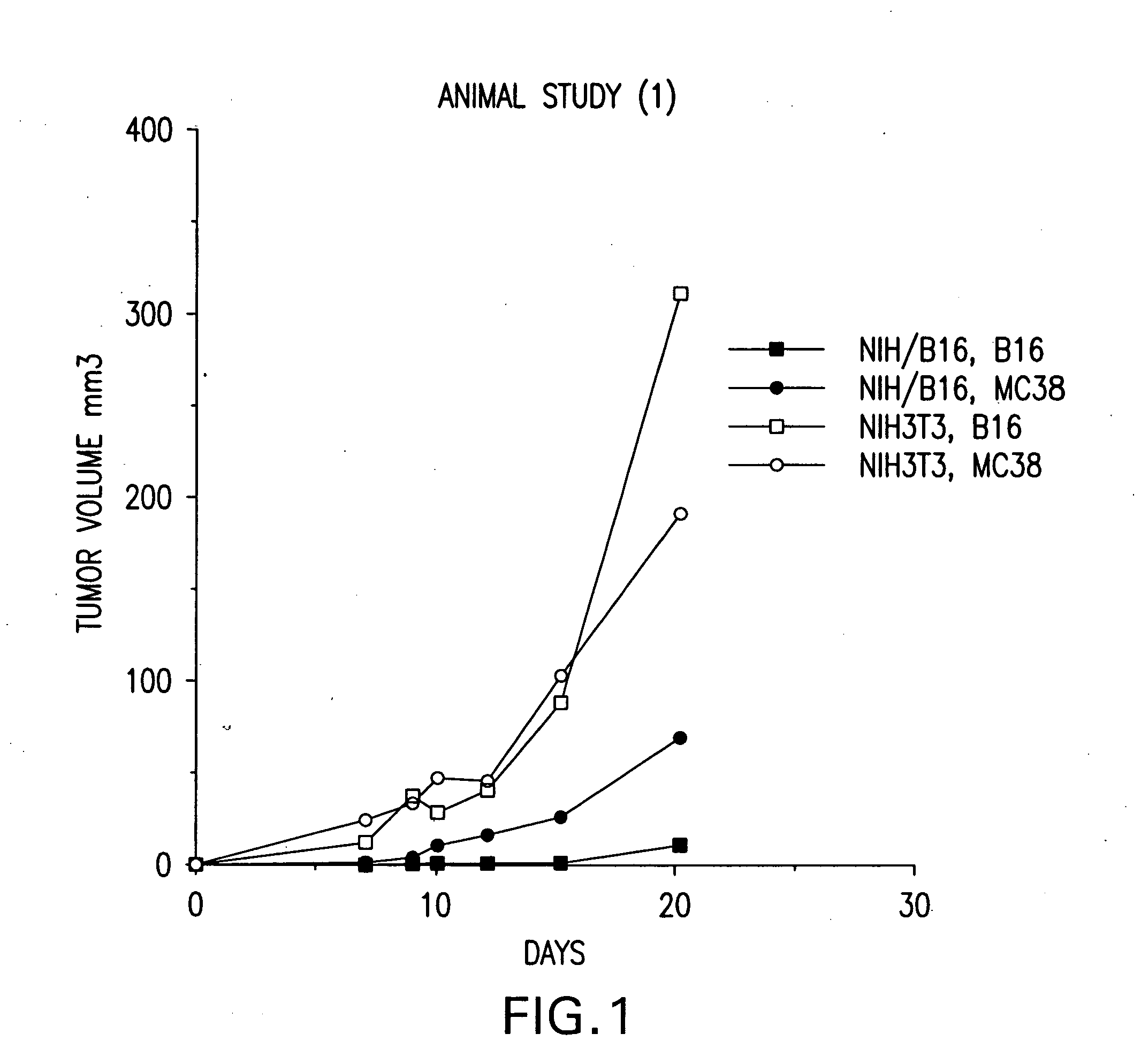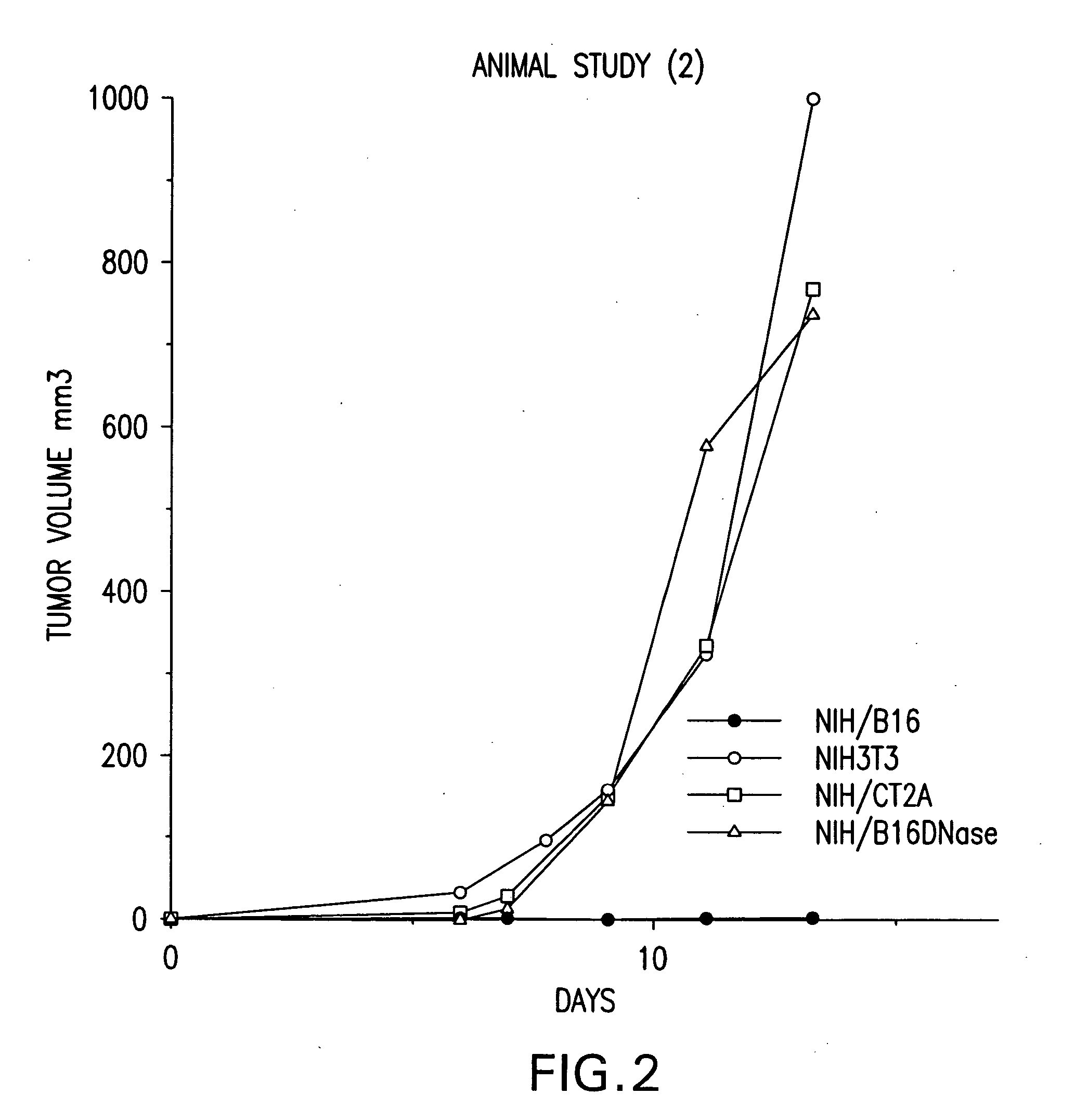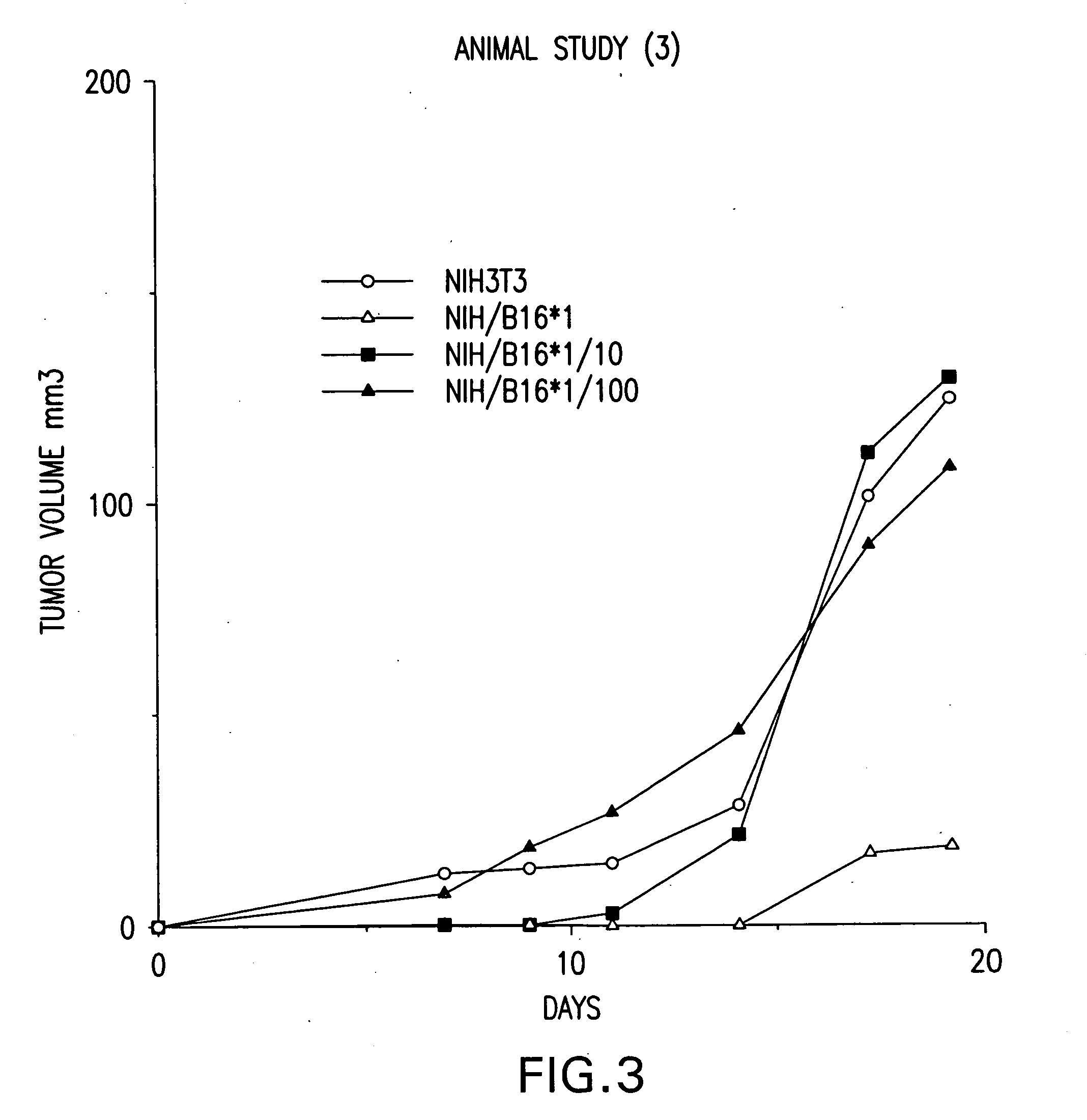Methods and compositions for hybrid cell vaccines for the treatment and prevention of cancer
a technology of hybrid cells and vaccines, applied in the field of methods and compositions for hybrid cell vaccines for the treatment and prevention of cancer, can solve the problems of tumor-specific antigen expression, tumor-specific antigen overexpression, and/or tumor-specific antigen alteration of the cellular distribution of normal and/or tumor-specific antigens, and achieve strong, specific immune response
- Summary
- Abstract
- Description
- Claims
- Application Information
AI Technical Summary
Benefits of technology
Problems solved by technology
Method used
Image
Examples
example i
5. EXAMPLE I PREVENTION OF TUMOR DEVELOPMENT BY VACCINATION WITH FUSION CELLS
[0268] The present example demonstrates the prophylactic and therapeutic use of fusion cells formed by fusion of antigen presenting cells fused to non-dendritic cells that were transfected with genomic DNA extracted from different tumor cells.
[0269] Vaccination as well as treatment of mice with fusion cells formed between non-dentritic cells carrying genomic DNA of a tumor cell and antigen presenting cells inhibited the development tumors after challenge with different types of tumors. That is, the volume of tumors for treated mice was lower than that for untreated control mice.
[0270] Accordingly, these data support the prophylactic as well as the therapeutic efficacy of fusion cell vaccines comprising antigen presenting cells fused to non-dendritic cells carrying genomic DNA of a tumor cell. Finally, although the non-dendritic cells in the mouse model used in the present example were generated from tumor...
example ii
6. ANTITUMOR EFFECTS OF FUSIONS COMPOSED OF DENDRITIC CELLS AND FIBROBLASTS TRANSFECTED WITH GENOMIC DNA FROM TUMOR CELLS
6.1 Introduction
[0289] Dendritic cells (DCs) are professional antigen presenting cells (APCs) that have a unique potency for activating T cells. DCs express high levels of major histocompatibility complexes (MHC) and adhesion and costimulatory molecules (1). The efficient isolation and preparation of both human and murine DCs are now possible (2, 3). Therefore, a DC-based vaccine could potentially be used for the treatment of malignant tumors.
[0290] Since mature DCs lose the ability to take up antigens, use of mature DCs requires efficient methods for incorporating tumor associated antigens (TAAs) into DCs. To date, several methods using DCs for the induction of antitumor immunity have been investigated: DCs pulsed with proteins or peptides extracted from tumor cells (4), DCs transfected with genes encoding TAAs (5), DCs cultured with tumor cells (6), and DCs f...
PUM
| Property | Measurement | Unit |
|---|---|---|
| Composition | aaaaa | aaaaa |
| Immunogenicity | aaaaa | aaaaa |
| Antigenicity | aaaaa | aaaaa |
Abstract
Description
Claims
Application Information
 Login to View More
Login to View More - R&D
- Intellectual Property
- Life Sciences
- Materials
- Tech Scout
- Unparalleled Data Quality
- Higher Quality Content
- 60% Fewer Hallucinations
Browse by: Latest US Patents, China's latest patents, Technical Efficacy Thesaurus, Application Domain, Technology Topic, Popular Technical Reports.
© 2025 PatSnap. All rights reserved.Legal|Privacy policy|Modern Slavery Act Transparency Statement|Sitemap|About US| Contact US: help@patsnap.com



